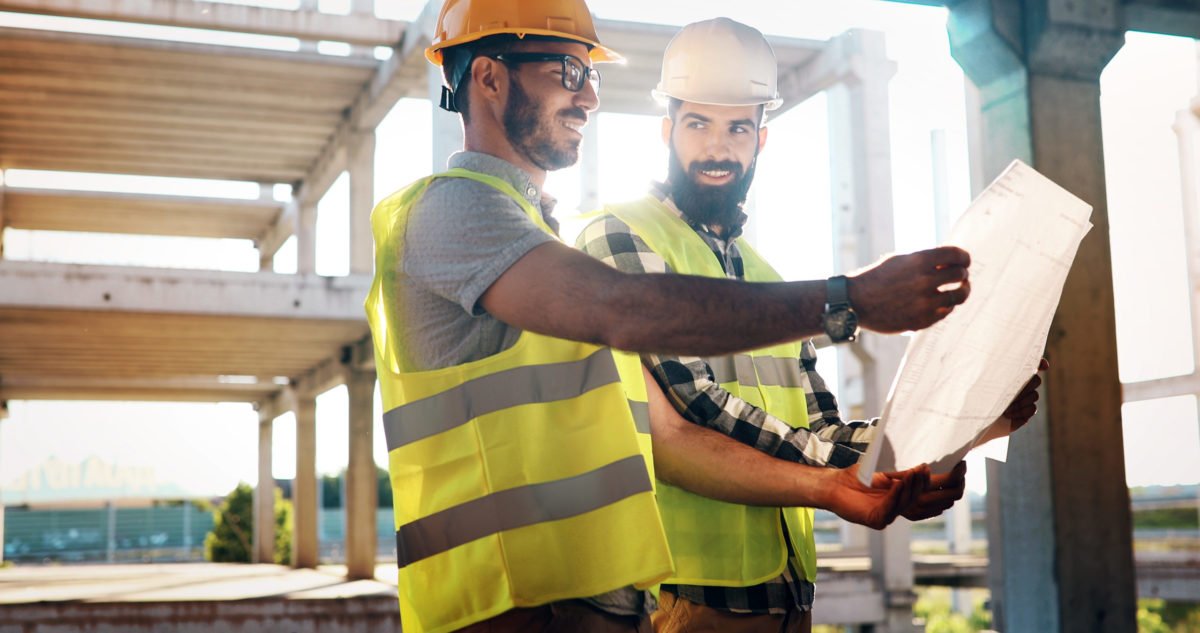Construction sustainability is one of the most important initiatives in the fight against climate change. As the largest industry in the world, accounting for some 13% of global GDP, construction has a massive environmental and social impact. Increasing awareness of climate change has created a push for more sustainable practices globally. But what does it really mean to build sustainably? We walk through the various definitions of construction sustainability, and assess its importance, benefits, and greatest challenges.
What is Construction Sustainability?
There are a wide range of definitions and even different terms applied to the concept of sustainable construction, from green building right through to sustainable design.
Professor Charles J. Kibert defines sustainable construction as the practice of creating and operating ‘a healthy built environment based on resource efficiency and ecological design with an emphasis on seven core principles across the building’s life cycle’.
The seven core principles of construction sustainability include: reducing, reusing, recycling, protecting nature, eliminating toxic materials, applying life cycle costing, and high quality.
If that definition is too restrictive, Bendapudi and Gupta identifies the three core goals of sustainable construction. These are as activities that:
- Reduce or eliminate the impacts of construction on the environment, natural resources and other non-renewable sources, and promote sustainability in the constructed environment overall.
- Improve the health and productivity of occupants.
- Reduce construction to functioning costs and apply a lifecycle approach to the planning and development of construction projects.
So, construction sustainability is not just about the building itself. It encompasses the broader implementation of sustainable philosophies through the entire asset lifecycle. It starts with good planning and goes right through to the long-term maintenance of the construction.
Why is Construction Sustainability so Important?
With global populations growing and urbanisation rapidly increasing, demand for construction will only intensify. But the industry, by its nature, is notoriously damaging to the environment.
Research shows that the construction industry accounts for a staggering 36% of worldwide energy use and a further 39% of global greenhouse gas emissions. Additionally, as much as 30% of all delivered building materials for a typical construction site ends up in waste disposal. But it doesn’t stop there. Development and construction make up a large portion of the carbon emissions, but operational emissions are just as bad. Emissions from buildings and infrastructure for heating, cooling and lighting account for some 28% of total emissions from the industry.
As the world moves towards a more sustainable future, construction faces immense pressure to curb its unsustainable processes. And it isn’t just coming from legislation. Consumers are also pushing for changes to more sustainable construction practices and actively lobbying government. The construction industry must adapt, and it needs to do it fast. Otherwise many construction companies could find themselves left behind by smarter, cleaner, more efficient builders.
Benefits of Sustainable Construction
Moving towards construction sustainability is not just a moral pursuit, it brings many economic and social benefits:
Sustainable construction increases the value of buildings
While people can often be turned off by the price tag of sustainable building, research shows that green buildings see an asset value increase of 7 percent over their less sustainable counterparts.
Sustainable buildings have lower operating costs
Sustainable construction often embeds new household technologies that create major energy savings. The European Commission estimates that the total savings on annual energy spending in sustainable buildings came to as much as €410 billion.
Sustainable construction practices significantly reduce waste
Market research suggests that annual construction waste is projected to reach 2.2 billion tons globally by 2025. That is a lot of resources simply being thrown into landfill.
By introducing the principles of reduce, reuse and recycle across all inputs of projects, the industry can make an enormous impact on construction waste. Newer innovations are also coming that make accessibility to sustainable construction materials easier and more affordable.
Building sustainably is great CSR
Some may think, ‘It’s a building. How much PR can I get from that?’ However, in a time when consumers are becoming more vigilant and outspoken, building well-designed constructions that improve the quality of life and the wellbeing of families and communities does not go unnoticed. In fact, building sustainably can significantly sway consumer behaviour. Research shows that 91% of consumers are likely to buy from a different company if the product is associated with a ‘good cause’.
Sustainable buildings improve human health and productivity
Sustainable buildings often incorporate plants and natural features into their interior design. Research shows that increased contact with nature has distinct physiological and psychological impacts on humans. These not only increase productivity, but can also reduce absenteeism in the workplace. Additionally, some buildings even provide onsite food farms that encourage healthier diets for their occupants.
Barriers of Sustainable Construction
Construction sustainability and a more sustainable lifestyle offer many advantages, but there are considerable challenges that need to be addressed. Here are a few of the key barriers that limit progress in this area:
Perceived affordability
The World Green Building report shows that almost 40% of firms in the UK believe affordability is the biggest barrier to adopting sustainable construction practices. But, while initial costs are higher, the long-term benefits from significant waste reduction, improved efficiency, and innovative technologies can create significant cost savings down the line.
Political and legislative constraints
Out of date building codes support traditional construction practices. This means that many new innovations are either outlawed or remain optional for building companies. For example, the tiny house movement aims to downsize living spaces for greater efficiency and lower waste. The movement has gained massive momentum as a sustainable housing and construction alternative but it faces a number of legal challenges, particularly in Australia.
Lack of experienced and highly skilled workforce
Sustainability is a relatively new field and there is still a shortage of professionals with the experience and knowledge of sustainability currently working in the construction industry. Although there are a few prominent certifications such as BREEAM and LEED, construction sustainability requires a skilled team to properly meet, implement, and maintain required standards.
Slow adoption of new innovation
Even though it’s the largest industry in the world, a Mckinsey report shows that construction is also one of the least digitised. In fact, it only manages to inch past agriculture in its adoption of new technology into its practices. Artificial intelligence is a critical technology that will increase efficiencies in construction project planning, monitoring, and execution. However, the slow adoption of these kinds of technologies is estimated to represent a lost economic opportunity of up to $1.6 trillion.
Limited availability of sustainable construction resources
There are some amazingly innovative sustainable construction materials that are making their way into the market. For example, there are building bricks made from recycled plastic that are stronger than concrete. However, the supply of these materials is still limited and are simply not easily available in large quantities. Though the market is growing rapidly, with the market expected to grow to $425.4 billion by 2027, current limitations have put sustainable sourcing on hold.
Start building sustainable construction projects with pmo365
pmo365 has been closely involved with the construction industry over many years as a project portfolio management (PPM) consultant. In fact, our CEO started out as a civil engineer and understands exactly why PPM inefficiencies are causing projects to constantly run over schedule and over budget.
As a result, pmo365 is dedicated to finding optimised solutions that simplify project management processes and bring greater efficiency and consistency. If you want to know more about sustainable construction projects with pmo365, be sure to arrange a free talk with our experts and check out our Complete Guide to Sustainability in Project Management.













